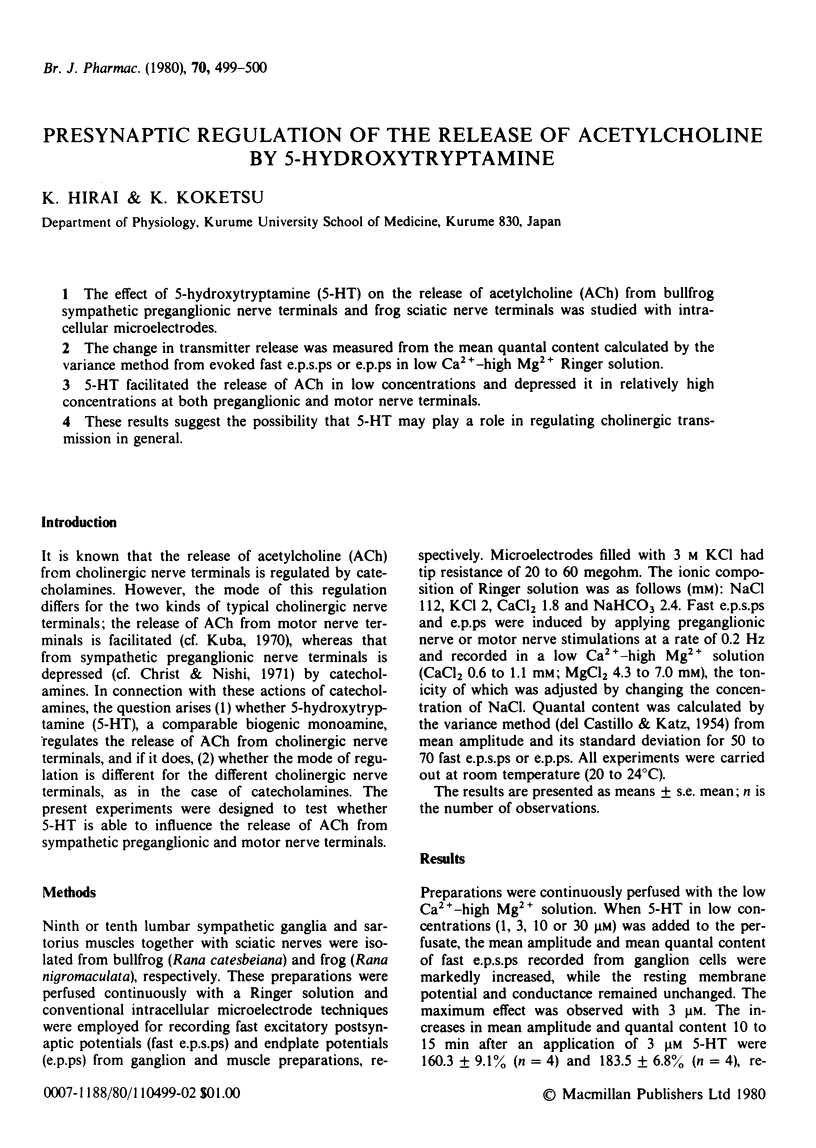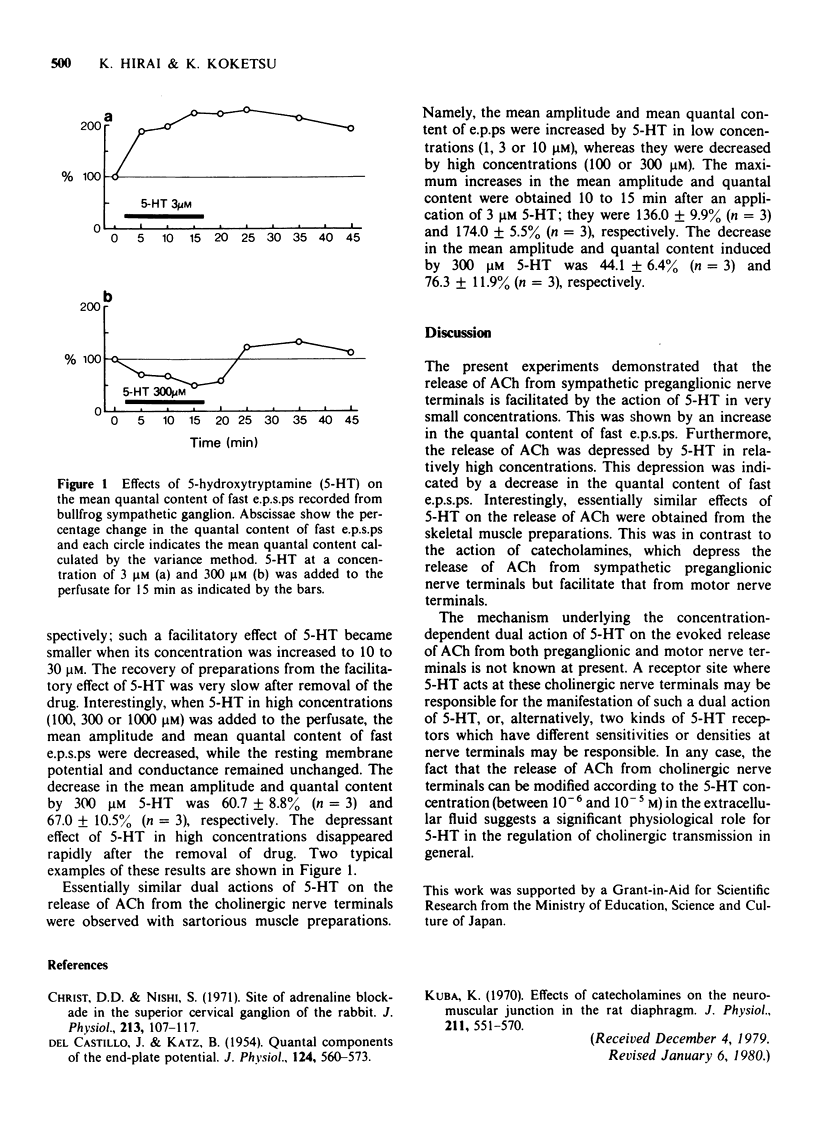Abstract
1 The effect of 5-hydroxytryptamine (5-HT) on the release of acetylcholine (ACh) from bullfrog sympathetic preganglionic nerve terminals and frog sciatic nerve terminals was studied with intra-cellular microelectrodes. 2 The change in transmitter release was measured from the mean quantal content calculated by the variance method from evoked fast e.p.s.ps or e.p.ps in low Ca2+-high Mg2+ Ringer solution. 3 5-HT facilitated the release of ACh in low concentrations and depressed it in relatively high concentrations at both preganglionic and motor nerve terminals. 4 These results suggest the possibility that 5-HT may play a role in regulating cholinergic transmission in general.
Full text
PDF

Selected References
These references are in PubMed. This may not be the complete list of references from this article.
- Christ D. D., Nishi S. Site of adrenaline blockade in the superior cervical ganglion of the rabbit. J Physiol. 1971 Feb;213(1):107–117. doi: 10.1113/jphysiol.1971.sp009371. [DOI] [PMC free article] [PubMed] [Google Scholar]
- DEL CASTILLO J., KATZ B. Quantal components of the end-plate potential. J Physiol. 1954 Jun 28;124(3):560–573. doi: 10.1113/jphysiol.1954.sp005129. [DOI] [PMC free article] [PubMed] [Google Scholar]
- Kuba K. Effects of catecholamines on the neuromuscular junction in the rat diaphragm. J Physiol. 1970 Dec;211(3):551–570. doi: 10.1113/jphysiol.1970.sp009293. [DOI] [PMC free article] [PubMed] [Google Scholar]


